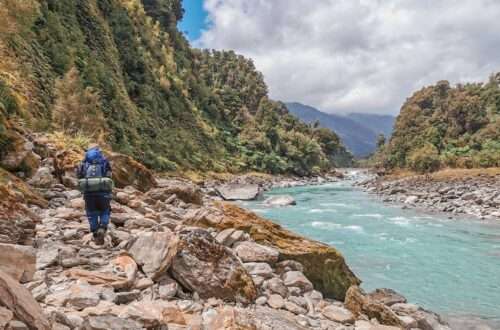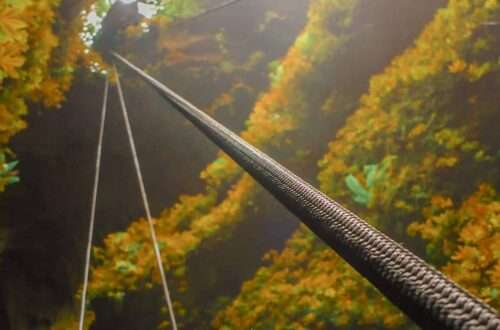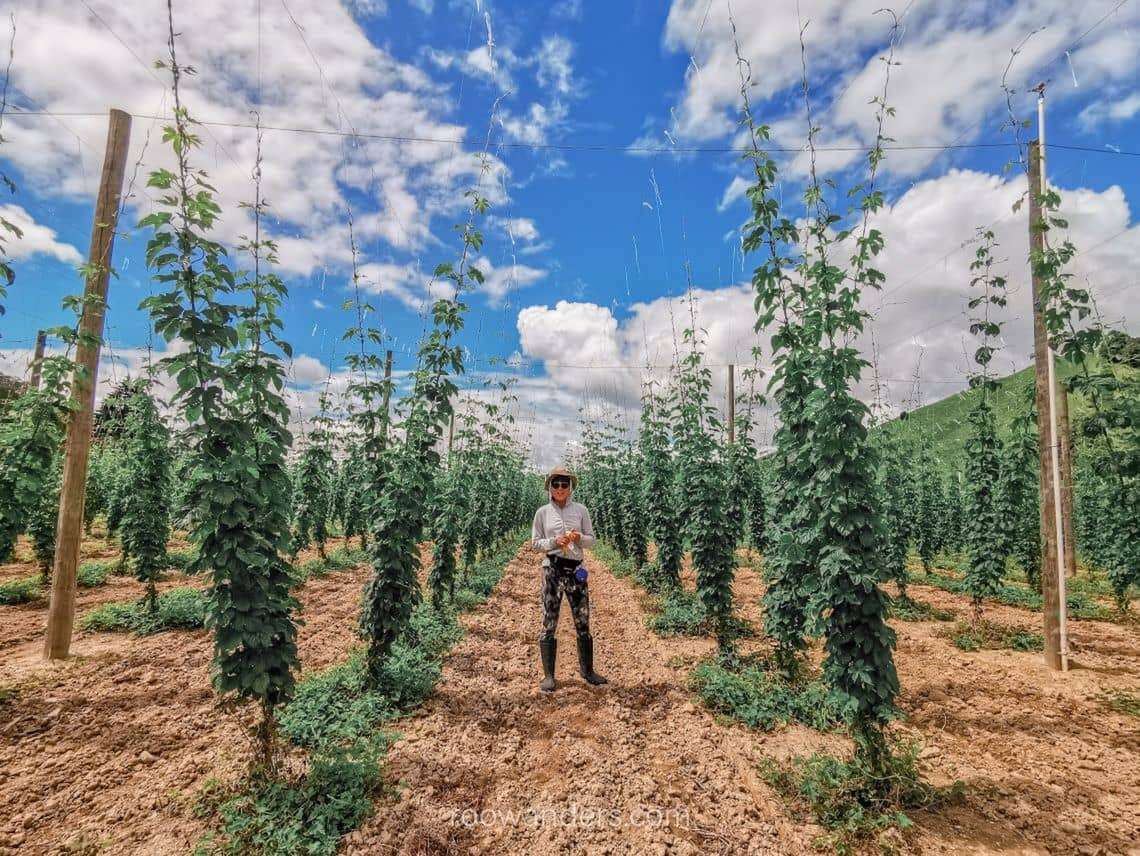
New Zealand Working Holiday Job #6: Training Hops
Hops?
Are you training rabbits??
If you were to translate the word Hops into Mandarin, it would be called 啤酒花, which means beer flower.
Hops thrive in warm and sunny regions, which anyone who has been hanging around in New Zealand long enough would associate with the northern part of the South Island.
For my 6th job in New Zealand, I was stationed in Tapawera, about an hour’s drive from Nelson.
Edit: I returned the following year because it was lucrative. But not everyone can handle the physical stress of working in this job, as we will come to it later in this post.
If you were to drive along the road from Motueka to Riwaka during summer, you would see rows of hop vines growing on strings tied onto high poles.
I did this job from Nov – Dec in 2020 and 2021. Post may be updated periodically.
From Hops to Beer
Hops are vines that climb. The hop plants have a scratchy exterior and are extremely fragile. I remember snapping off a few ‘heads’ of the juvenile plants as I was training them. We had to wear gloves to protect against the plants’ rough surfaces.
What’s valuable about the plant is its female fruit.
During harvest time, which is the hottest and driest season of the year aka summer, the green female hop cones would achieve an optimum amount of flavour compounds and moisture suitable for beer brewing.

The Seasons
Winter
Hop plant lies dormant underground. Buds start to spring out closer to Spring.
Spring
The hop plant starts to spurt. Requires training to help saplings climb onto strings.
Summer
Hop plant matures, flowers, and bears fruit. Harvest time.
Autumn
The hop plant starts to brown off. Nutrients from the leaves and cones are transferred to roots underground for storage.
What I Do
I come into the flowchart during spring, doing hops training.
Work can be tough as you need to constantly squat and stand throughout the row that could contain over 300 plants i.e. squat, stand, repeat 300 times.

But what made the job enticing was the hourly rate. Pay is comparatively good at a minimum rate of $21 /h, and later $23 /h in 2021. You are paid more depending on your pace of training the plants. The minimum wage in NZ was $18.9/ h and $20/ h in 2020 and 2021, respectively.
Based on the contract, each plant trained gets you at least $0.9. Training is divided into two parts – first training and second training.


The first training is comparatively harder as the vines are all over the place, and you need to grab 3 or 4 strands and train them, delicately, over the taut string. I was told this would bring us slightly more than 50% of the rate per plant.
The second training is easier as the plants are already on the string. My task here is to make sure there are only 3 or 4 saplings per string (depending on variety) and stomp down the unneeded ones. These unneeded ones would be burnt away by a special tractor.



Add-ons: In my second year as a hops trainer, most of us – the old staff – returned and worked comparatively faster than before. We completed both the first and second training weeks earlier and had to train hops saplings in the boss’s relative’s orchards. One of the orchards planted organic hops, which were heavily flooded with weeds since herbicides were not used. We had to flatten and pull the weeds by hand before they were burnt away by the special tractor.
Memorable Moments
I don’t think any jobs I had done or would be doing would eclipse the fond memories I’ve gathered from doing calving.
Edit: Lambing held fond memories too. After doing hops training again in 2021, I have to disagree with myself of 2020 here. Having gotten used to hops training and getting new support – Helinox camp chair – I could comfortably string up hops at a faster rate.
Hops training is my first outdoor job. Despite the unpredictable NZ weather, working outdoors does give me some pleasure. I am always amongst the mountains and would hear the sheep or cows next door. Working outdoors with plants also means very little human interaction. We could listen to our audio while working, which I maximised by subscribing to audiobooks or podcasts.
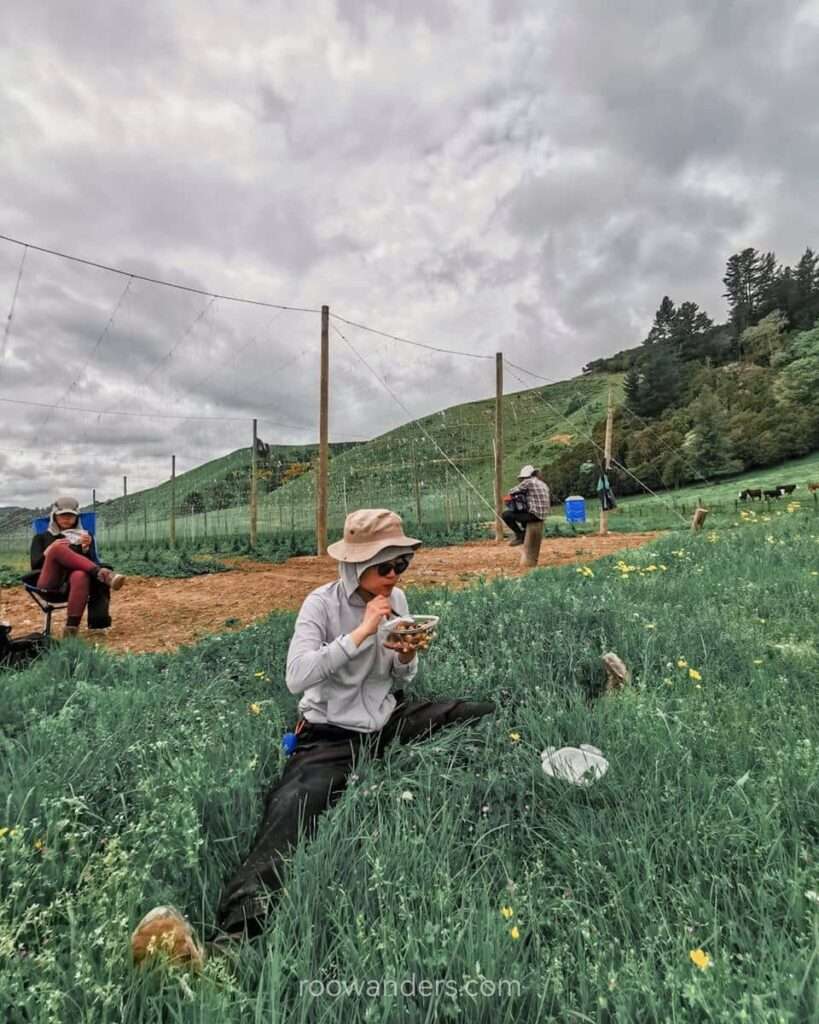

I guess the main highlight that comes with this job is the accommodation. We were entitled to stay in caravans! No need to hunt for one and lug the expensive bulky block around the roads just for the experience. Seven weeks in a caravan was another adventure. We cooked, cleaned, ate, and slept within. More on this in a separate post.


Our boss is a generous man. Apart from the pay, which is higher than the minimum wage, he likes to have mini parties too. I had two BBQs and several sausage parties during my stay. Boss also likes to keep his beer stash stocked, which we helped ourselves with after work. He sometimes arrives at the garden with Oreos or ice pops too.
On our last stay in the caravan in 2021, we played board games almost every evening and on rainy days, caught and ate BBQed eels, saved a nestling, and captured the Aurora Australis.
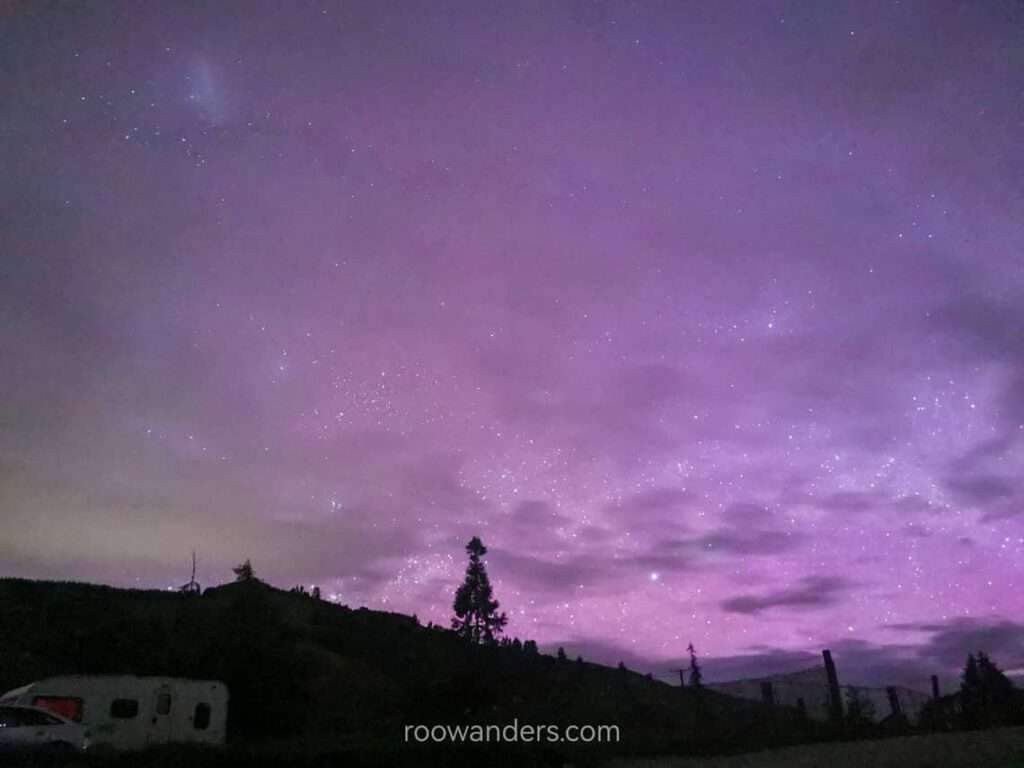



Ending
Seven weeks of working outdoors flew by too quickly. I am still reeling from the withdrawal effects of living in a caravan as I write this post in our new abode – a small container room that sometimes reeks of paint somewhere in Central Otago. EDIT: EXACT SAME THOUGHTS ABOUT THE CARAVAN LIFE IN 2021. But that’s okay. I am moving on to the next chapter of my unusually long Working Holiday in NZ and can’t wait for new adventures. Edit: You went to do cherry picking, but the weather failed you, so you ended up packing flowers in Christchurch instead for Valentine’s Day.








